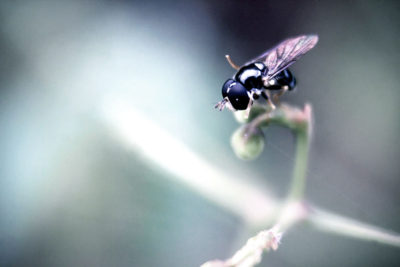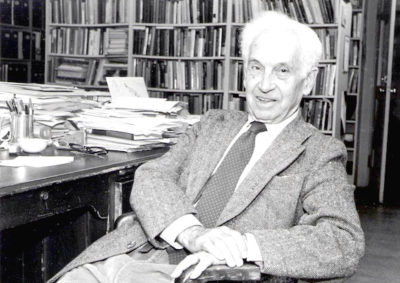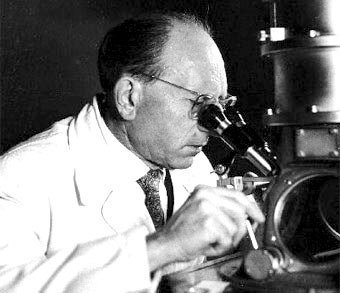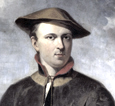 The evolution industry is celebrating 100 years of fruit fly genetic research. Charles W. Woodworth, at the University of California, Berkeley, at the turn of the twentieth century, was the first to use the fruit fly as a model in the study of genetics.
The evolution industry is celebrating 100 years of fruit fly genetic research. Charles W. Woodworth, at the University of California, Berkeley, at the turn of the twentieth century, was the first to use the fruit fly as a model in the study of genetics.
During the twentieth century, Drosophila melanogaster, the common fruit fly, was one of the most studied organisms in biological research, particularly in genetics.
In 1910, following Woodworth’s footsteps, Thomas Hunt Morgan at Columbia University extended Gregor Mendel’s fundamental principles of genetics. Morgan’s laboratory in Schermerhorn Hall is now known as the Fly Room. The following year, Morgan published his findings in Science, establishing the foundation for the emerging neo-Darwinism movement.
In his book The Mechanism of Mendelian Inheritance (1915), Morgan demonstrated how radiation-induced mutations on two-winged fruit flies produced four-winged fruit flies. Genetic mutations were the first step in the evolution speciation process, it seemed.
Mutation Questions
Questions, though, began to center on whether the mutated four-winged fruit fly was an emerging new species or just an aberration. By 1963, after decades of fruit fly genetic research, an answer began to emerge.  Ernst Mayr (pictured right), a leading twentieth-century leading evolutionary biologist, conceded –
Ernst Mayr (pictured right), a leading twentieth-century leading evolutionary biologist, conceded –
“Such evident freaks that these monsters can be designated only as ‘hopeless.’ They are so utterly unbalanced that they would not have the slightest chance of escaping elimination.”
Mutations are not the first step in evolution. From the early to the mid-twentieth century, however, mutations in the two-winged fruit fly served as scientific genetic evidence supporting the theory of evolution. By the late twentieth century, however, genetic mutations were increasingly viewed as harmful, not advantageous. As Italian geneticist Giuseppe Sermonti explains –
“One spur to research on mutations was the hope that an accumulation of these might lead to a new species. But this never happened.”
The fruit fly genetic research as a model for evolution only appears in outdated biology textbooks. Even between the more than 1,400 closely related species with the number of nucleotide base pairs ranging from 127 to 800 million, there is no evidence for Darwin’s predicted “slight, successive” changes. In The Origin of Species, Darwin argued –
 “Natural selection acts solely by accumulating slight, successive, favourable variations; it can produce no great or sudden modifications.”
“Natural selection acts solely by accumulating slight, successive, favourable variations; it can produce no great or sudden modifications.”
Once used as evidence supporting evolution, today, fruit fly genetic research only discovered an argument against evolution. Pierre-Paul Grassé, past president of the French Academie des Sciences in his book Evolution of Living Organisms, writes –
“The fruit fly [Drosophila melanogaster], the favorite pet insect of the geneticists, whose geographical, biotopical, urban, and rural genotypes are now known inside out, seems not to have changed since the remotest times.”
D. melanogaster Genome
With the sequencing of the D. melanogaster genome completed in 2000, geneticists have since studied the genome for evidence of evolution. Geneticists at Bioinformatics Research Center, North Carolina State University, continued to question the role of genetics in evolution. Wen-Ping Hsieh et al., in the journal Genetics (2003) noted –
“An emerging issue in evolutionary genetics is whether it is possible to use gene expression profiling to identify genes that are associated with morphological, physiological, or behavioral divergence between species.”
As technologies continued to advance, molecular mysteries began to be uncovered, one by one. In 2006 in the Department of Ecology and Evolutionary Biology at the University of Arizona, Jeffrey M. Good (pictured left) et al.,  published “Adaptive Protein Evolution and Regulatory Divergence in Drosophila” in the journal of Molecular Biology and Evolution, noting –
published “Adaptive Protein Evolution and Regulatory Divergence in Drosophila” in the journal of Molecular Biology and Evolution, noting –
“Overall, we found no strong evidence for an increase in the incidence of positive selection on protein-coding regions in genes with divergent expression in Drosophila.”
In looking for evidence of evolution within the Drosophila species, Good’s team found “no strong evidence.” However, with the expanding genetic database, unexpected findings have emerged. As Sharmila Bhattacharya of NASA’s Ames Research Center explains –
“About 61% of known human disease genes have a recognizable match in the genetic code of fruit flies, and 50% of fly protein sequences have mammalian analogues.”
Rather than a model of evolution, fruit fly genetic research only serves as a model for studying human diseases – intensifying the Darwin Dilemma. Reflecting the naïvity of gambling on science to validate the theory of evolution, in the words of Giuseppe Sermonti –
“Science has taken on the great wager [evolution]… and lost.”
Genesis
Celebrations to recognize more than 100 years of fruit fly genetic research, serving as a testing model of evolution, are canceled – the model busted. The genetic evidence discovered, however, continues to be  compatible with the Genesis account written by Moses.
compatible with the Genesis account written by Moses.
Carolus Linnaeus (pictured left), an eighteenth-century Swedish botanist, physician, and zoologist, formalized the modern system of naming organisms called binomial nomenclature, notes during the Scientific Revolution –
“The flowers’ leaves… serve as bridal beds which the Creator has so gloriously arranged, adorned with such noble bed curtains, and perfumed with so many soft scents that the bridegroom with his bride might there celebrate their nuptials with so much the greater solemnity.”
Refer to the Glossary for the definition of terms and to Understanding Evolution to gain insights into understanding evolution.
2020 Update
WIKIPEDIA, 2020
On the Drosophila melanogaster page, there is no longer any mention of fruit fly genetic research as a model of evolution. The page, however, discusses genetic similarities between the fruit fly and human disease.
“A March 2000 study by National Human Genome Research Institute comparing the fruit fly and human genome estimated that about 60% of genes are conserved between the two species. About 75% of known human disease genes have a recognizable match in the genome of fruit flies, and 50% of fly protein sequences have mammalian homologs. An online database called Homophila is available to search for human disease gene homologues in flies and vice versa. “
Evolution 101, 2020
On the Defining Speciation page, it poses a comment and a question. The question –
“Genetic changes resulted in two separate fruit fly lineages, where previously there had just been one lineage. But why and how did it happen?”
The answer –
“The branching points on this partial Drosophila phylogeny represent long past speciation events. Here is one scenario that exemplifies how speciation can happen:”
Explanations: storytelling without scientific evidence –
-
- Disaster strikes: “A hurricane washes the bananas and the immature fruit flies.” they contain out to sea.
- The populations diverge: “Ecological conditions change… Morphology, food preferences, and courtship displays change over the course of many generations of natural selection.”
- So we meet again: “When another storm reintroduces the island flies to the mainland, they will not readily mate with the mainland flies since they’ve evolved different courtship behaviors. The few that do mate with the mainland flies produce inviable eggs because of other genetic differences between the two populations. The lineage has split now that genes cannot flow between the populations.”
Smithsonian Museum
The Smithsonian no longer hosts information linking the fruit fly and evolution – posted in 2002.

